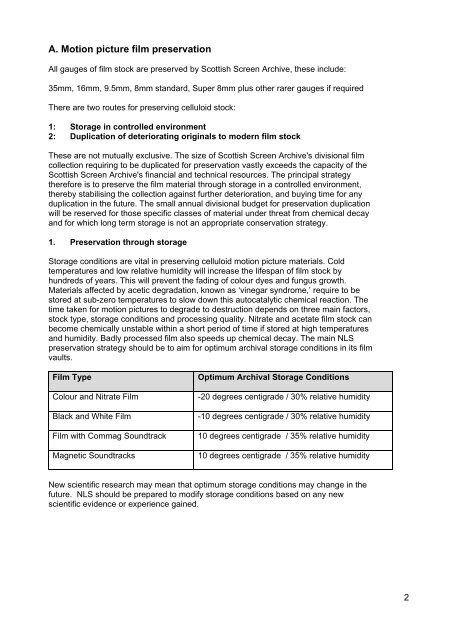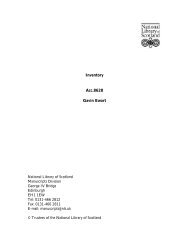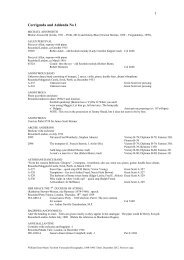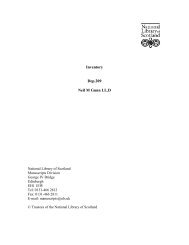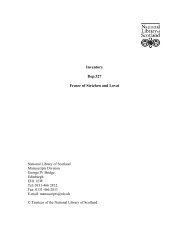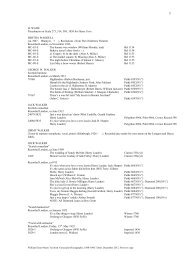Scottish Screen Archive moving image preservation strategy (PDF)
Scottish Screen Archive moving image preservation strategy (PDF)
Scottish Screen Archive moving image preservation strategy (PDF)
You also want an ePaper? Increase the reach of your titles
YUMPU automatically turns print PDFs into web optimized ePapers that Google loves.
A. Motion picture film <strong>preservation</strong><br />
All gauges of film stock are preserved by <strong>Scottish</strong> <strong>Screen</strong> <strong>Archive</strong>, these include:<br />
35mm, 16mm, 9.5mm, 8mm standard, Super 8mm plus other rarer gauges if required<br />
There are two routes for preserving celluloid stock:<br />
1: Storage in controlled environment<br />
2: Duplication of deteriorating originals to modern film stock<br />
These are not mutually exclusive. The size of <strong>Scottish</strong> <strong>Screen</strong> <strong>Archive</strong>'s divisional film<br />
collection requiring to be duplicated for <strong>preservation</strong> vastly exceeds the capacity of the<br />
<strong>Scottish</strong> <strong>Screen</strong> <strong>Archive</strong>'s financial and technical resources. The principal <strong>strategy</strong><br />
therefore is to preserve the film material through storage in a controlled environment,<br />
thereby stabilising the collection against further deterioration, and buying time for any<br />
duplication in the future. The small annual divisional budget for <strong>preservation</strong> duplication<br />
will be reserved for those specific classes of material under threat from chemical decay<br />
and for which long term storage is not an appropriate conservation <strong>strategy</strong>.<br />
1. Preservation through storage<br />
Storage conditions are vital in preserving celluloid motion picture materials. Cold<br />
temperatures and low relative humidity will increase the lifespan of film stock by<br />
hundreds of years. This will prevent the fading of colour dyes and fungus growth.<br />
Materials affected by acetic degradation, known as ‘vinegar syndrome,’ require to be<br />
stored at sub-zero temperatures to slow down this autocatalytic chemical reaction. The<br />
time taken for motion pictures to degrade to destruction depends on three main factors,<br />
stock type, storage conditions and processing quality. Nitrate and acetate film stock can<br />
become chemically unstable within a short period of time if stored at high temperatures<br />
and humidity. Badly processed film also speeds up chemical decay. The main NLS<br />
<strong>preservation</strong> <strong>strategy</strong> should be to aim for optimum archival storage conditions in its film<br />
vaults.<br />
Film Type<br />
Colour and Nitrate Film<br />
Black and White Film<br />
Film with Commag Soundtrack<br />
Magnetic Soundtracks<br />
Optimum Archival Storage Conditions<br />
-20 degrees centigrade / 30% relative humidity<br />
-10 degrees centigrade / 30% relative humidity<br />
10 degrees centigrade / 35% relative humidity<br />
10 degrees centigrade / 35% relative humidity<br />
New scientific research may mean that optimum storage conditions may change in the<br />
future. NLS should be prepared to modify storage conditions based on any new<br />
scientific evidence or experience gained.<br />
2


